Design of an Interface Layer Using CPW between an Array Antenna and TRM in X-Band Radar Systems to Minimize Leakage Fields and Improve Transmission Characteristics
Abstract
:1. Introduction
2. Proposed Interface Layer Using a CPW
2.1. Geometry of the Interface Layer Using the CPW
2.2. Fabrication and Measurement
2.3. Analysis of the Transitions of the Proposed Interface Layer
3. Verification Using an X-Band Radar Array Antenna
4. Conclusions
Author Contributions
Funding
Institutional Review Board Statement
Informed Consent Statement
Data Availability Statement
Acknowledgments
Conflicts of Interest
References
- Pehlivan, M.; Yegin, K. X-band low-probability intercept marine radar antenna design with improved bandwidth and high isolation. IEEE Trans. Antennas Propag. 2021, 69, 8949–8954. [Google Scholar] [CrossRef]
- Wang, Z.; Zhou, J.; Wang, Y.-N.; Zhu, Z.; Fang, S.; Liu, H. A compact feeding network with radiation contribution for X-band marine radar antenna array applications. Microw. Opt. Technol. Lett. 2019, 61, 2819–2825. [Google Scholar] [CrossRef]
- Huang, W.; Liu, X.; Gill, E.W. Ocean wind and wave measurements using X-band marine radar: A comprehensive review. Remote Sens. 2017, 9, 1261. [Google Scholar] [CrossRef]
- Lu, K.; Leung, K.W.; Yang, N. 3-D-Printed circularly polarized twisted-ridge horn antenna. IEEE Trans. Antennas Propag. 2021, 69, 1746–1750. [Google Scholar] [CrossRef]
- Manshari, S.; Koziel, S.; Leifsson, L. A wideband corrugated ridged horn antenna with enhanced gain and stable phase center for X- and Ku-band applications. IEEE Antennas Wirel. Propag. Lett. 2019, 18, 1031–1035. [Google Scholar] [CrossRef]
- Ur-Rehman, M.; Safdar, G.A.; Yang, X.; Chen, X. Design and study of a circular polarised conical-disc-backed spiral antenna for X-band applications. IEEE Access 2017, 5, 21344–21354. [Google Scholar] [CrossRef]
- Zhai, H.; Tjuatja, S.; Bredow, J.W.; Lu, M. A quasi-planar conical antenna with broad bandwidth and omnidirectional pattern for ultrawideband radar sensor network applications. IEEE Trans. Antennas Propag. 2010, 58, 3480–3489. [Google Scholar] [CrossRef]
- Rajesh, N.; Malathi, K.; Raju, S.; Kumar, V.A.; Prasath, S.D.R.; Alsath, M.G.N. Design of Vivaldi antenna with wideband radar cross section reduction. IEEE Trans. Antennas Propag. 2017, 65, 2102–2105. [Google Scholar] [CrossRef]
- Bang, J.; Lee, J.; Choi, J. Design of a wideband antipodal Vivaldi antenna with an asymmetric parasitic patch. J. Electromagn. Eng. Sci. 2018, 18, 29–34. [Google Scholar] [CrossRef]
- Yan, J.-B.; Gogineni, S.; Camps-Raga, B.; Brozena, J. A dual-polarized 2–18-GHz Vivaldi array for airborne radar measurements of snow. IEEE Trans. Antennas Propag. 2016, 64, 781–785. [Google Scholar] [CrossRef]
- Jeon, G.-H.; Dzagbletey, P.A.; Chung, J.-Y. A cross-joint Vivaldi antenna pair for dual-pol and broadband testing capabilities. J. Electromagn. Eng. Sci. 2021, 21, 201–209. [Google Scholar] [CrossRef]
- Jang, D.; Lim, T.H.; Kim, D.; Wang, S.; Choo, H. Design of a high-durability X-band patch antenna with a CPW feeding network based on a durability evaluation analysis. Electronics 2022, 11, 553. [Google Scholar] [CrossRef]
- Kuo, F.-Y.; Hwang, R.-B. High-isolation X-band marine radar antenna design. IEEE Trans. Antennas Propag. 2014, 62, 2331–2337. [Google Scholar]
- Bilgic, M.M.; Yegin, K. Wideband offset slot-coupled patch antenna array for X/Ku-band multimode radars. IEEE Antennas Wirel. Propag. Lett. 2014, 13, 157–160. [Google Scholar] [CrossRef]
- Rana, B.; Lee, I.-G.; Hong, I.-P. Experimental characterization of 2 × 2 electronically reconfigurable 1 bit unit cells for a beamforming transmitarray at X band. J. Electromagn. Eng. Sci. 2021, 21, 153–160. [Google Scholar] [CrossRef]
- Carlofelice, A.D.; Paulis, F.D.; Fina, A.; Marcantonio, U.D.; Orlandi, A.; Tognolatti, P. Compact and reliable T/R module prototype for advanced space active electronically steerable antenna in 3-D LTCC technology. IEEE Trans. Microw. Theory Tech. 2018, 66, 2746–2756. [Google Scholar] [CrossRef]
- Wang, S.; Qi, H.; Yu, W. Polarimetric SAR internal calibration scheme based on T/R module orthogonal phase coding. IEEE Trans. Geosci. Remote Sens. 2009, 47, 3969–3980. [Google Scholar] [CrossRef]
- Makhoul, E.; Broquetas, A.; Lopez-Dekker, F.; Closa, J.; Saameno, P. Evaluation of the internal calibration methodologies for spaceborne synthetic aperture radars with active phased array antennas. IEEE J. Sel. Top. Appl. Earth Observ. Remote Sens. 2012, 5, 909–918. [Google Scholar] [CrossRef]
- Fina, A.; Carlofelice, A.D.; Paulis, F.D. High power, thermally efficient, X-band 3D T/R module with calibration capability for space radar. IEEE Access 2018, 6, 60921–60929. [Google Scholar] [CrossRef]
- Yeo, S.-K.; Chun, J.-H.; Kwon, Y.-S. A 3-D X-band T/R Module package with an anodized aluminum multilayer substrate for phased array radar applications. IEEE Trans. Adv. Packag. 2010, 33, 883–891. [Google Scholar] [CrossRef]
- Yu, Z.-J.; Xu, Z.; Deng, Y.-K.; Zhang, Z.-G. An overall LTCC package solution for X-band tile T/R module. Prog. Electromagn. Res. Lett. 2013, 38, 181–192. [Google Scholar] [CrossRef] [Green Version]
- Ortiz, J.A.; Salazar-Cerreno, J.L.; Diaz, J.D.; Lebron, R.M.; Aboserwal, N.A.; Jeon, L. Low-cost CMOS active array solution for highly dense X-band weather radar network. IEEE Trans. Antennas Propag. 2020, 68, 5421–5430. [Google Scholar] [CrossRef]
- Jidi, L.; Cao, X.; Li, W.; Gao, J.; Zheng, Y.; Li, T.; Tang, Y. X-band and circularly polarized antenna with inborn RCS reduction. IEEE Antennas Wirel. Propag. Lett. 2018, 17, 1501–1504. [Google Scholar] [CrossRef]
- SMP-MSSB-PCS15T, Amphenol RF. Available online: https://kr.mouser.com/manufacturer/amphenolrf/ (accessed on 1 November 2021).
- FEKO EM Software, Altair. Available online: https://www.altair.co.kr/feko/ (accessed on 1 November 2021).
- Wang, S.; Kim, H.; Kim, H.; Choo, H. Design of a polarization-selective EM transparent mesh-type E-shaped antenna for shared-aperture radar applications. Appl. Sci. 2022, 12, 1862. [Google Scholar] [CrossRef]
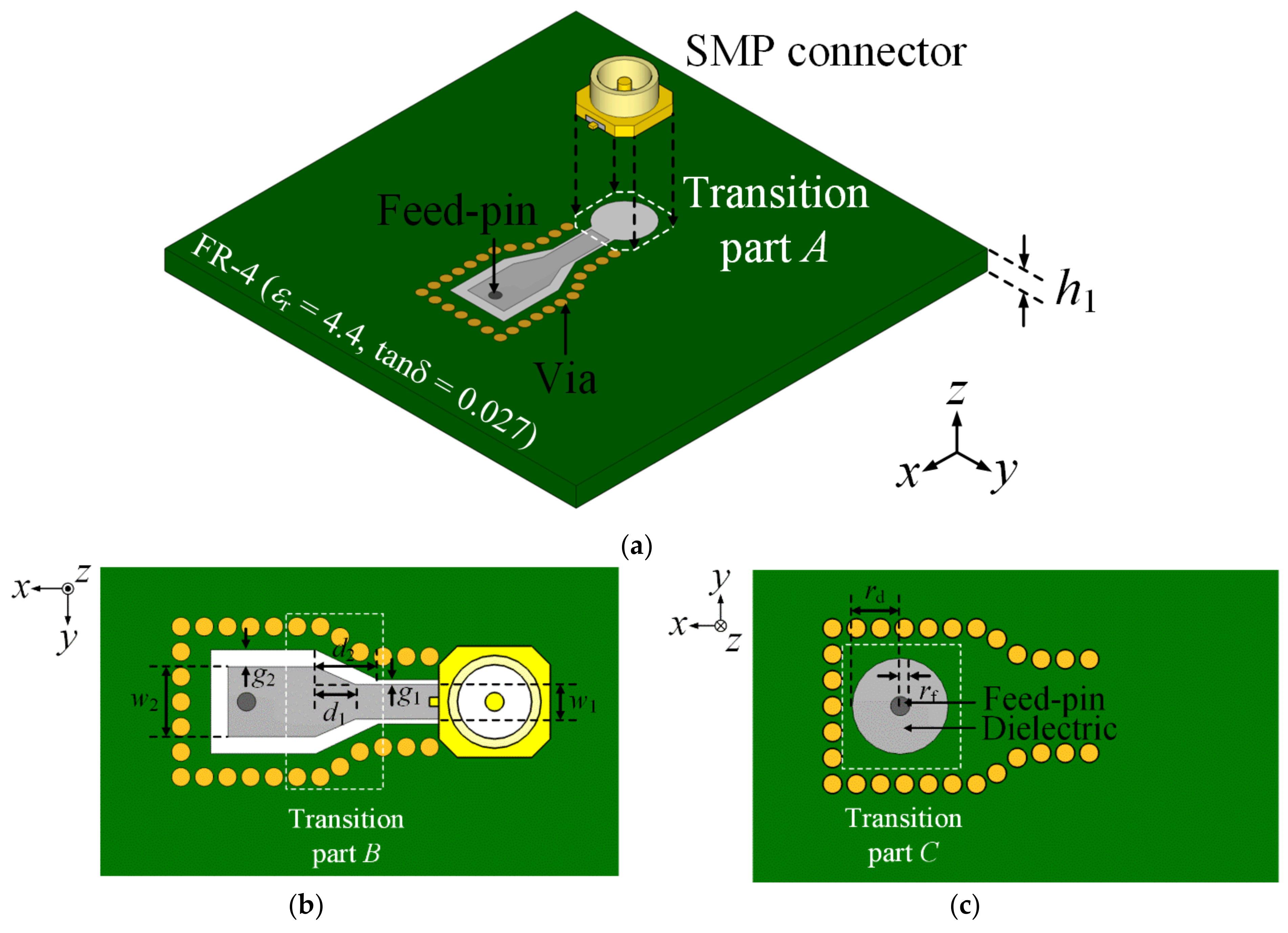
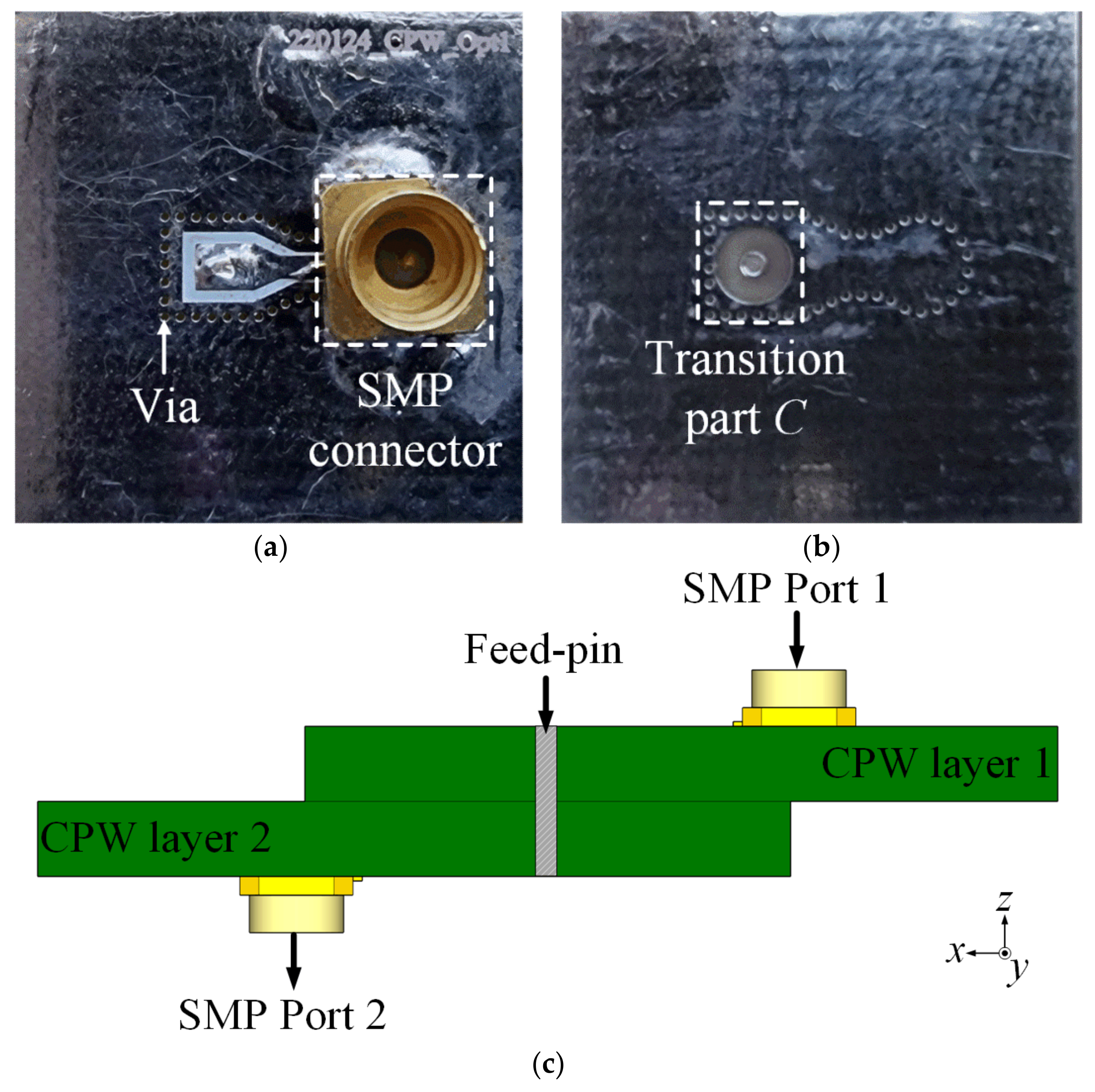

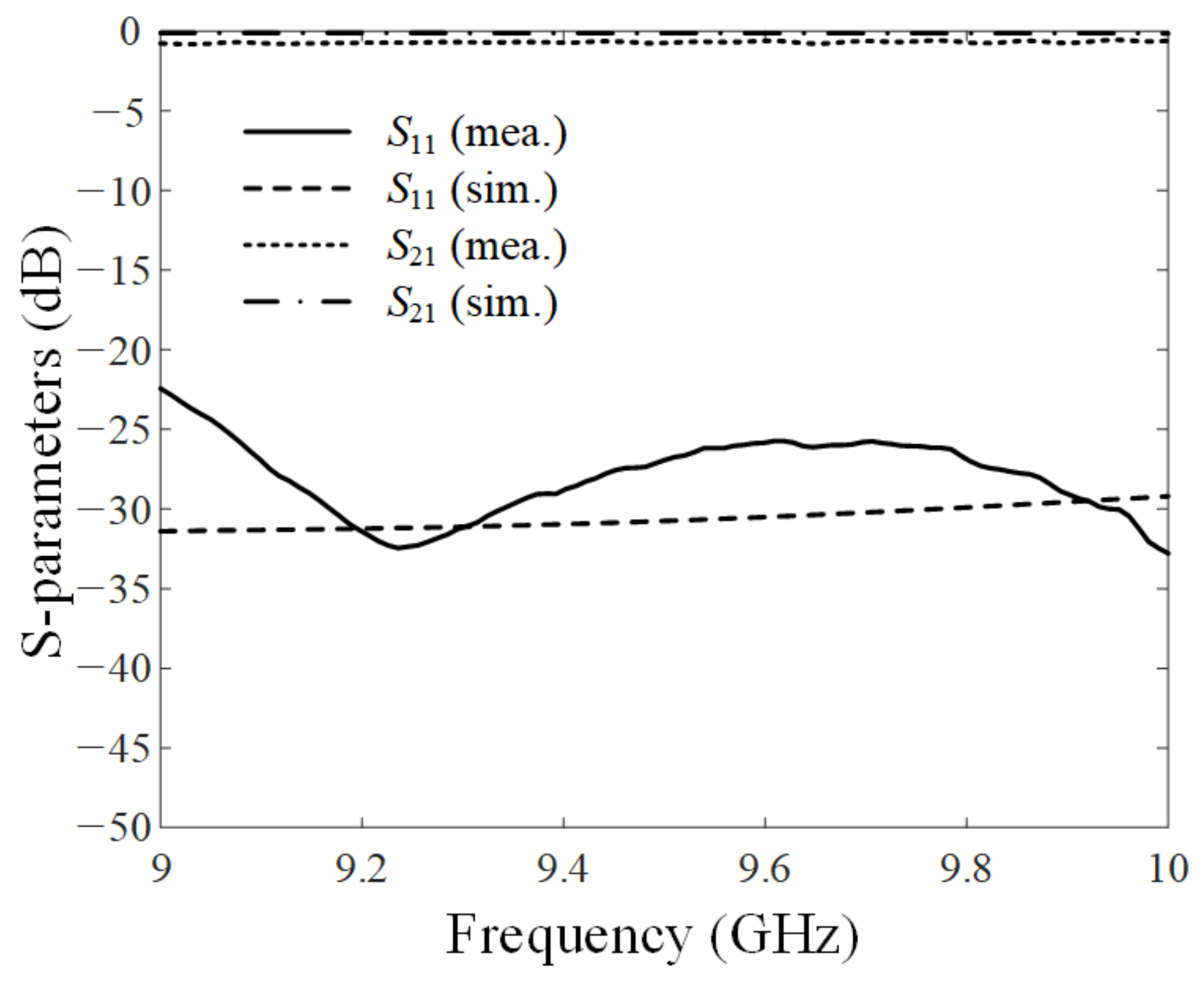
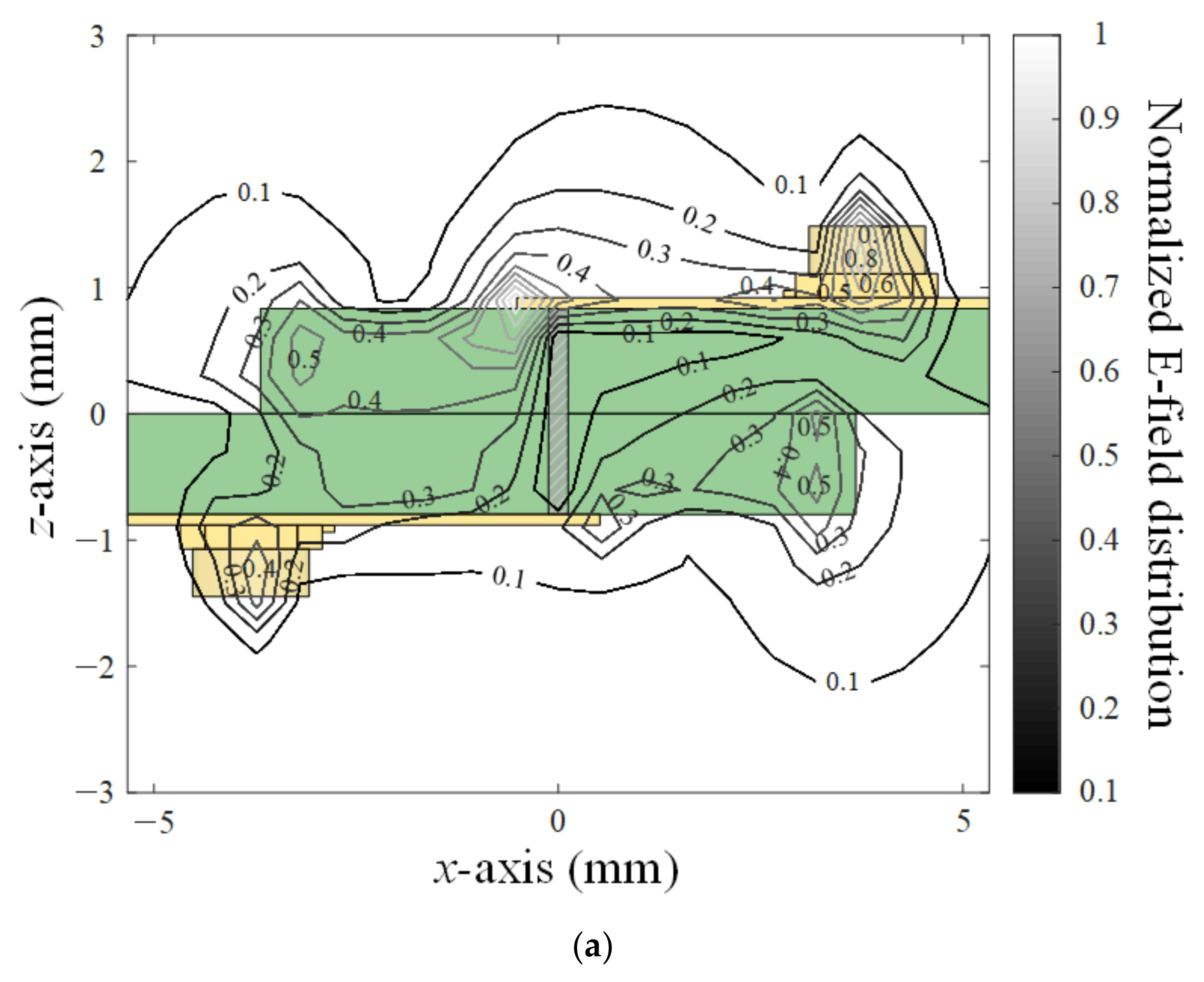
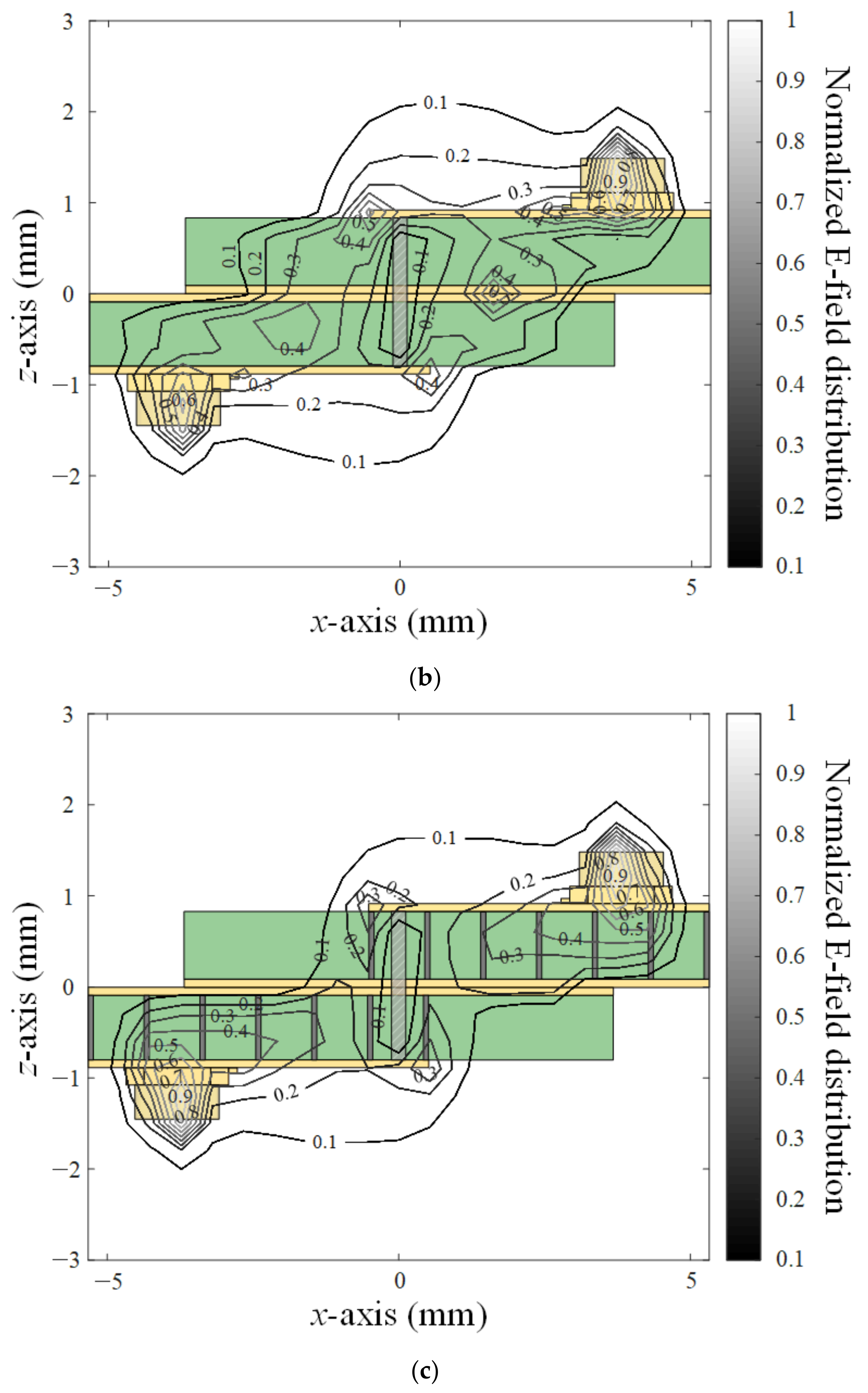
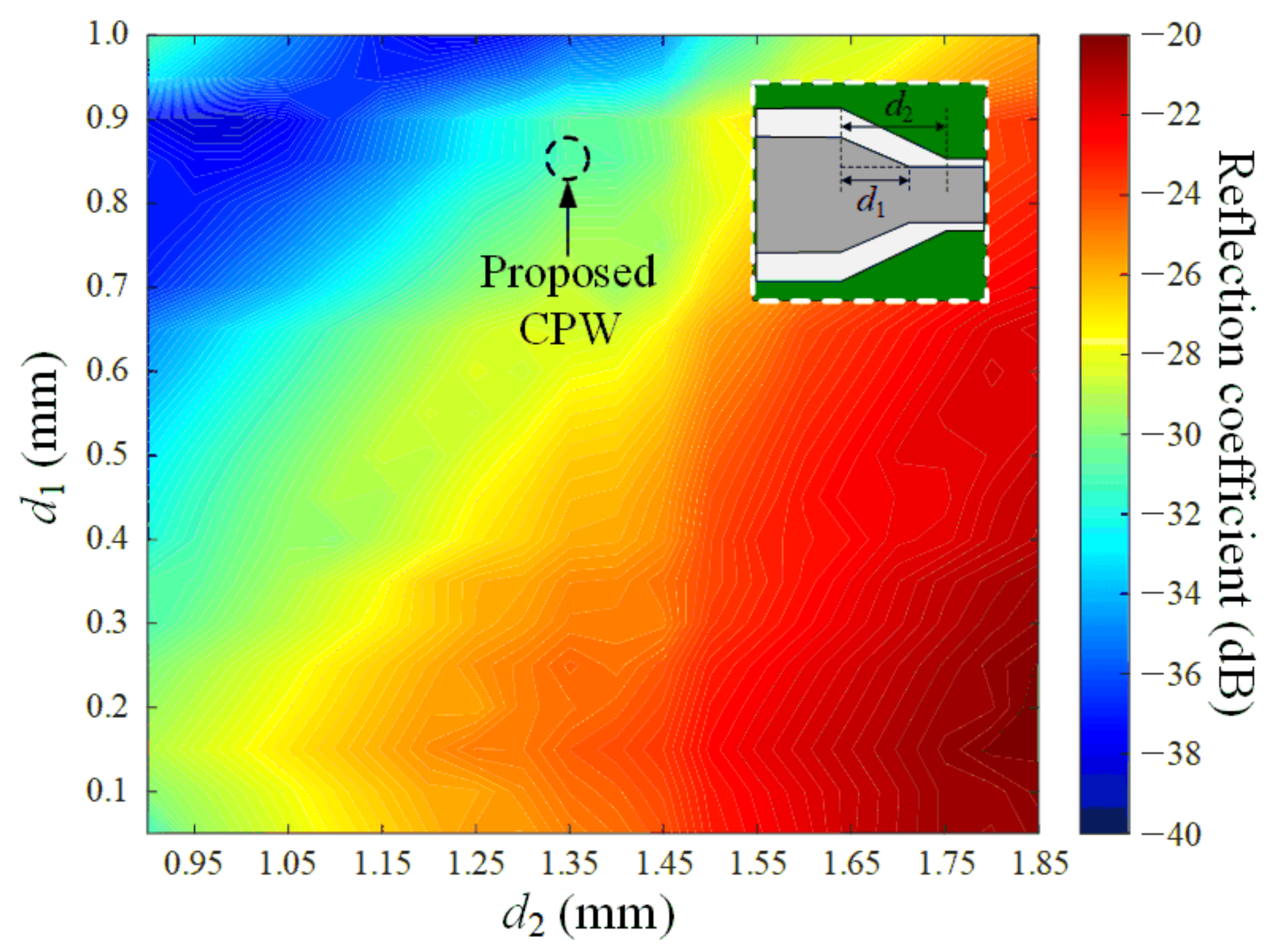
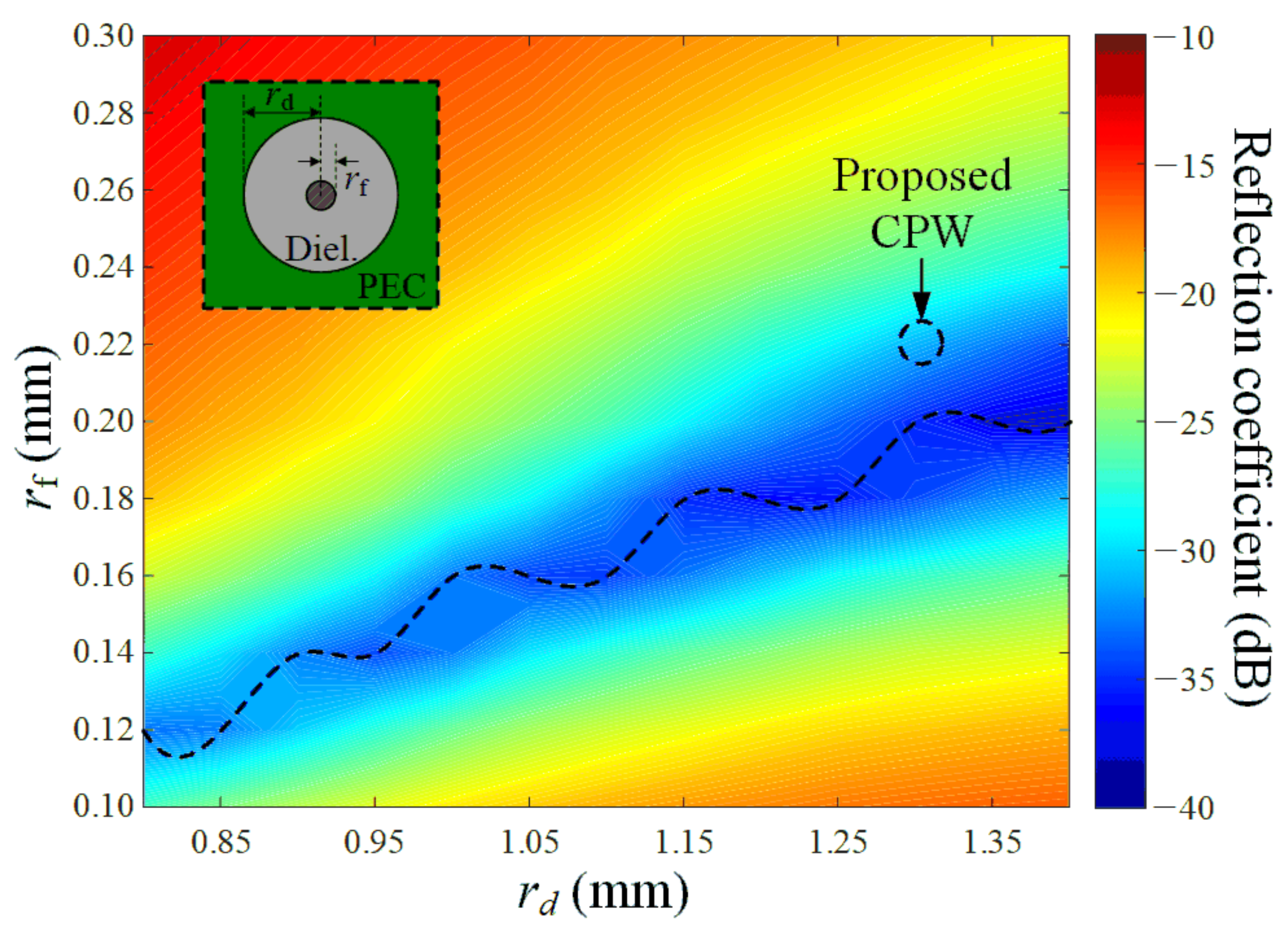
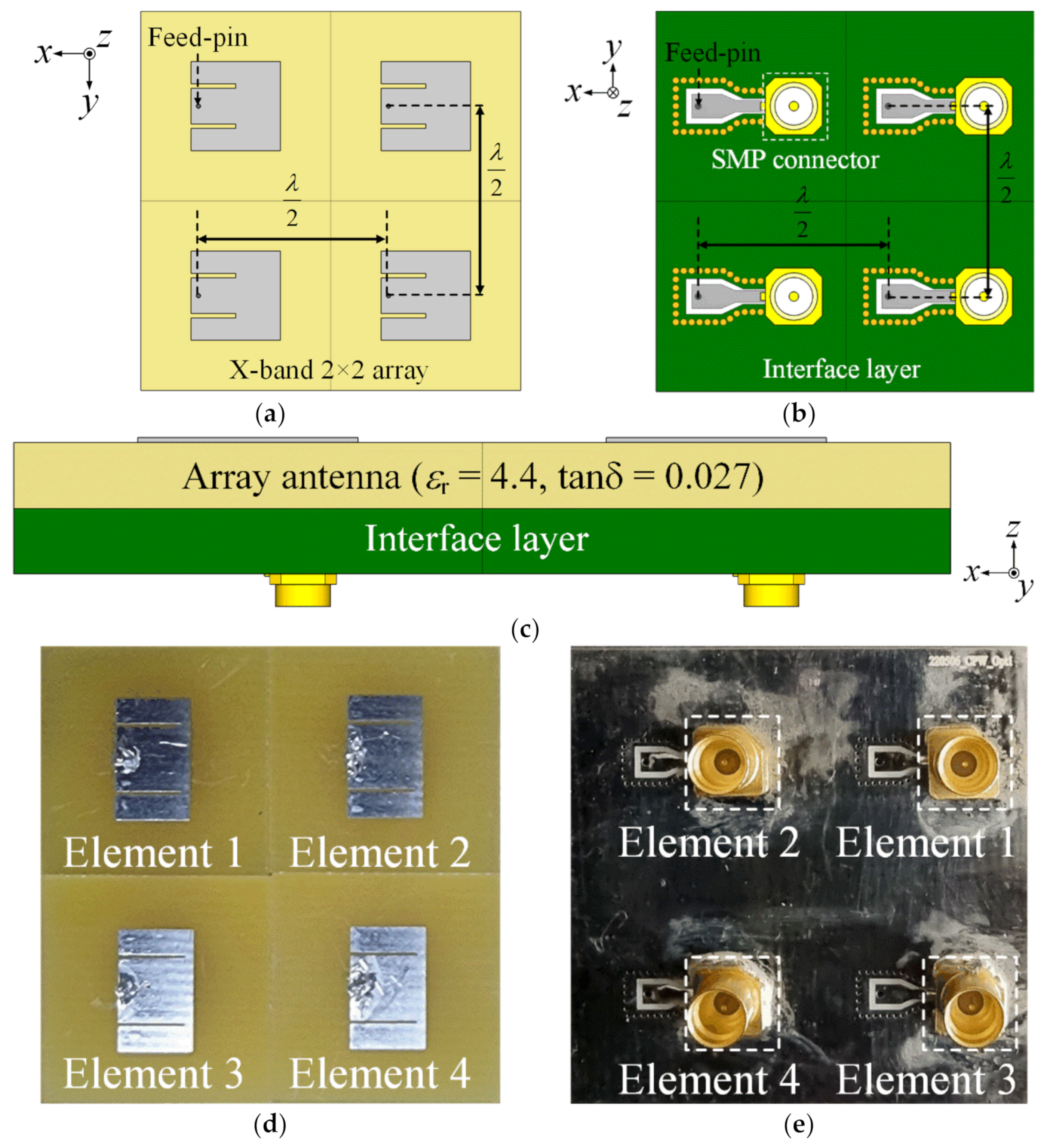
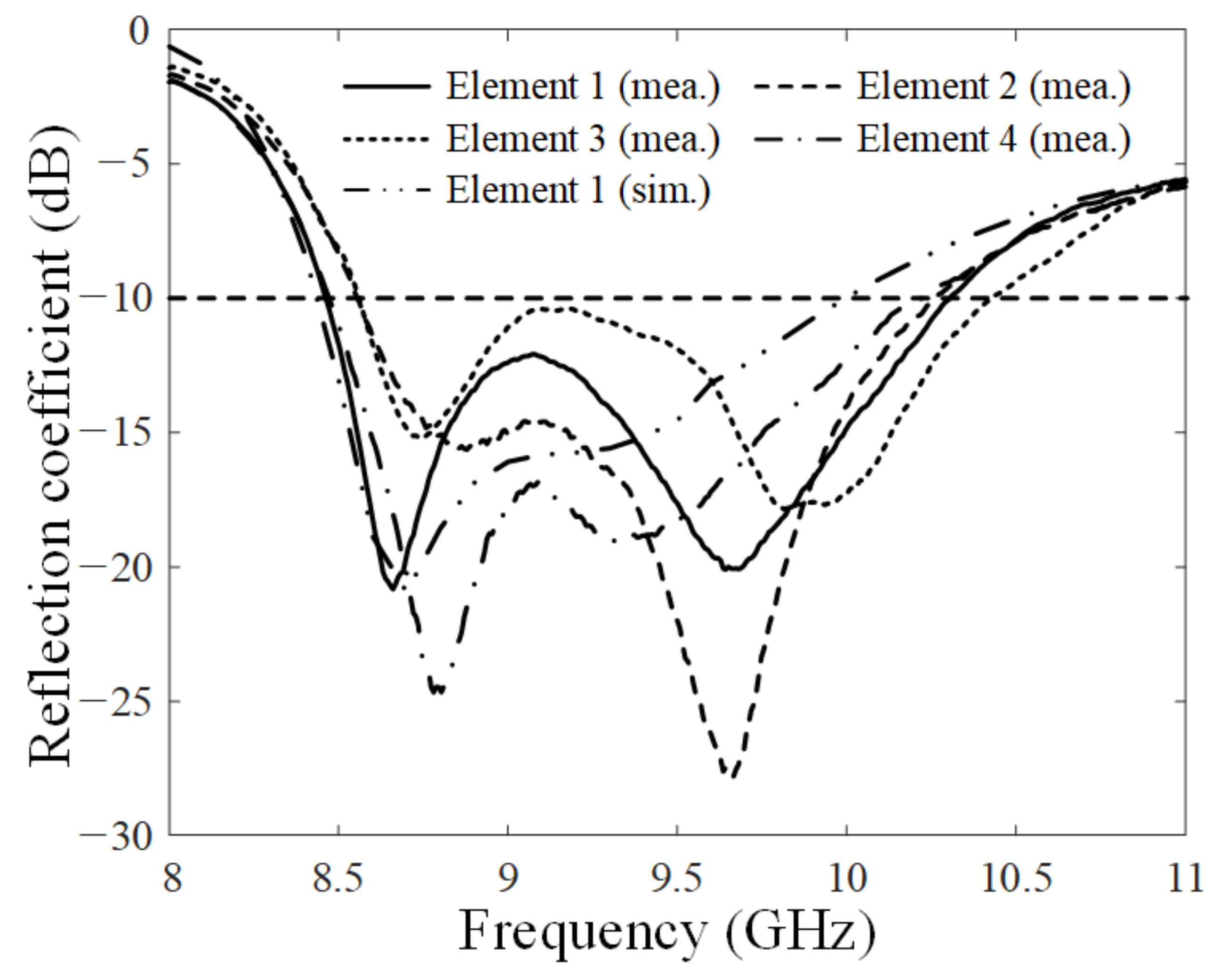
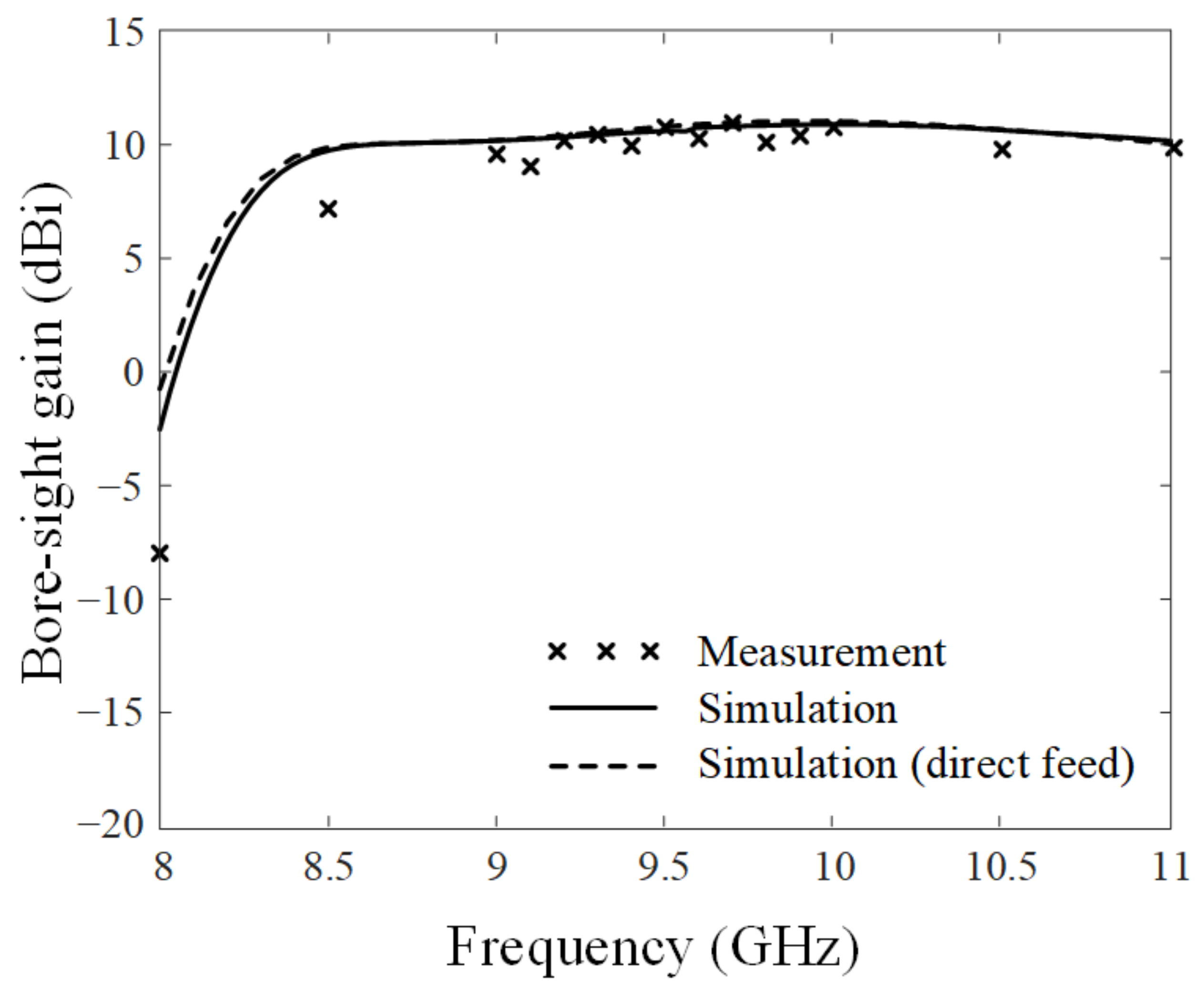
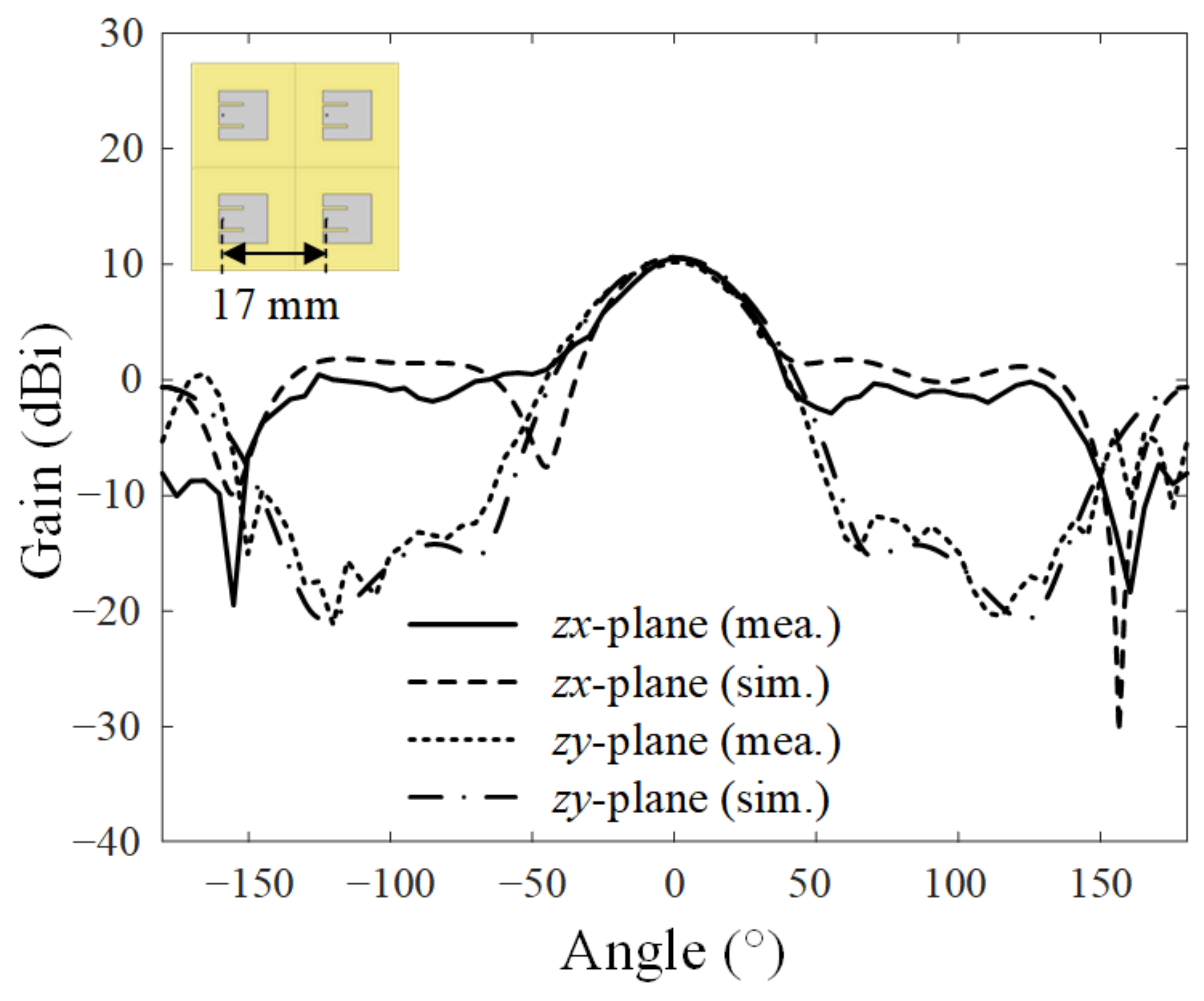
| Parameter | Value (mm) |
|---|---|
| h1 | 0.8 |
| w1 | 0.75 |
| w2 | 1.5 |
| g1 | 0.1 |
| g2 | 0.37 |
| d1 | 0.85 |
| d2 | 1.35 |
| rf | 0.22 |
| rd | 1.3 |
Publisher’s Note: MDPI stays neutral with regard to jurisdictional claims in published maps and institutional affiliations. |
© 2022 by the authors. Licensee MDPI, Basel, Switzerland. This article is an open access article distributed under the terms and conditions of the Creative Commons Attribution (CC BY) license (https://creativecommons.org/licenses/by/4.0/).
Share and Cite
Cho, J.; Jang, D.; Lee, C.-H.; Choo, H. Design of an Interface Layer Using CPW between an Array Antenna and TRM in X-Band Radar Systems to Minimize Leakage Fields and Improve Transmission Characteristics. Appl. Sci. 2022, 12, 8514. https://doi.org/10.3390/app12178514
Cho J, Jang D, Lee C-H, Choo H. Design of an Interface Layer Using CPW between an Array Antenna and TRM in X-Band Radar Systems to Minimize Leakage Fields and Improve Transmission Characteristics. Applied Sciences. 2022; 12(17):8514. https://doi.org/10.3390/app12178514
Chicago/Turabian StyleCho, Jeongmin, Doyoung Jang, Chang-Hyun Lee, and Hosung Choo. 2022. "Design of an Interface Layer Using CPW between an Array Antenna and TRM in X-Band Radar Systems to Minimize Leakage Fields and Improve Transmission Characteristics" Applied Sciences 12, no. 17: 8514. https://doi.org/10.3390/app12178514
APA StyleCho, J., Jang, D., Lee, C.-H., & Choo, H. (2022). Design of an Interface Layer Using CPW between an Array Antenna and TRM in X-Band Radar Systems to Minimize Leakage Fields and Improve Transmission Characteristics. Applied Sciences, 12(17), 8514. https://doi.org/10.3390/app12178514







